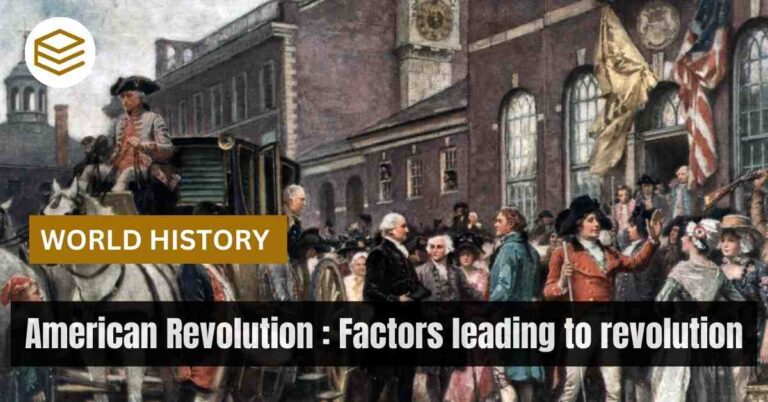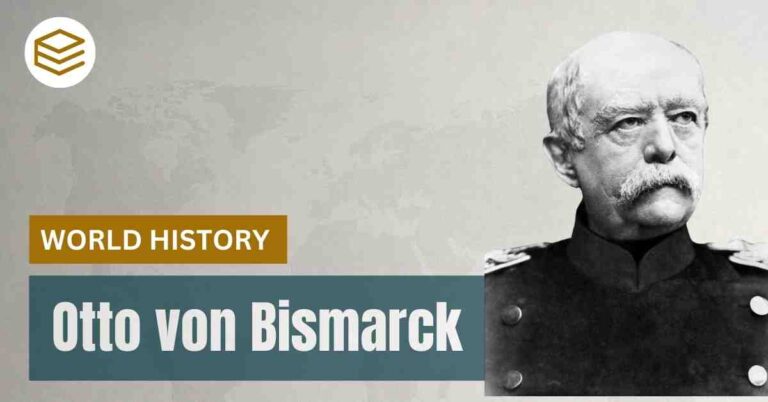December 8, 2025 10:34 pm
The Unification of Germany in the 19th century stands as one of the most pivotal moments in European history, marking the emergence of a strong and cohesive German state under Prussian leadership. Spearheaded by the vision and strategy of Otto von Bismarck, the process of German unification was a carefully orchestrated blend of diplomacy, military action, and political maneuvering. This landmark event not only reshaped the political map of Europe but also laid the foundation for Germany’s rise as a dominant power.
I. Historical Background
A. Fragmentation of Germany
- Holy Roman Empire:
- Before the Unification of Germany, the region was a patchwork of over 300 independent states under the loose framework of the Holy Roman Empire.
- This political fragmentation hindered economic and political cohesion.
- Napoleonic Wars:
- The Napoleonic Wars (1803–1815) dismantled the Holy Roman Empire, reducing the number of German states to 39, organized under the Confederation of the Rhine.
B. Congress of Vienna (1815)
- After Napoleon’s defeat, the Congress of Vienna created the German Confederation, a loose association of 39 states dominated by Austria and Prussia.
- The lack of a unified government stifled German nationalism and economic growth.
C. Rise of Nationalism
- Inspired by the ideals of the French Revolution and the shared linguistic and cultural heritage, German nationalism began to take root.
- Events such as the Revolutions of 1848 underscored the growing demand for national unification.
II. Otto von Bismarck and the Unification of Germany
A. Realpolitik: Bismarck’s Vision
- Pragmatism over Ideology:
- Bismarck, the architect of the Unification of Germany, employed Realpolitik, focusing on practical goals rather than idealistic aspirations.
- He famously declared, “The great questions of the day will not be decided by speeches and majority decisions but by blood and iron.”
- Leadership of Prussia:
- Prussia, under Bismarck’s leadership, was positioned to lead German unification due to its military strength, industrial base, and efficient bureaucracy.
B. Steps Toward Unification
- The Danish War (1864):
- Prussia, allied with Austria, engaged in war with Denmark over the duchies of Schleswig and Holstein.
- The victory enhanced Prussia’s prestige and set the stage for Austria’s exclusion from German affairs.
- Austro-Prussian War (1866):
- Known as the Seven Weeks’ War, this conflict was engineered by Bismarck to diminish Austrian influence in Germany.
- Battle of Königgrätz:
- Prussia’s decisive victory demonstrated its military superiority.
- Result:
- Austria was excluded from German politics, and the North German Confederation was established under Prussian control.
- Franco-Prussian War (1870–1871):
- Bismarck manipulated the Ems Dispatch to provoke France into declaring war.
- Battle of Sedan:
- Prussian forces decisively defeated France, capturing Emperor Napoleon III.
- Result:
- The southern German states joined the North German Confederation, completing the Unification of Germany.
III. Proclamation of the German Empire
- January 18, 1871:
- The German Empire was proclaimed in the Hall of Mirrors at the Palace of Versailles, symbolizing Prussian dominance.
- King Wilhelm I of Prussia was crowned as the first German Emperor (Kaiser).
- Bismarck as Chancellor:
- Otto von Bismarck became the first Chancellor of the German Empire, consolidating its political and economic foundations.
IV. Impact of the Unification of Germany
A. Political Implications
- Shift in European Power:
- The Unification of Germany disrupted the European balance of power, creating a new, formidable state.
- Decline of Austria:
- Austria’s exclusion marked its decline as a dominant German-speaking power.
- Rise of Nationalism:
- The successful unification inspired nationalist movements across Europe.
B. Economic Transformation
- The Unification of Germany created a vast internal market, fostering industrial growth and economic modernization.
C. Militarization and Foreign Relations
- The militaristic nature of the unification process entrenched a culture of militarism in German society, contributing to future conflicts.
V. Legacy of the Unification of Germany
A. Otto von Bismarck’s System
- Diplomatic Alliances:
- To maintain peace, Bismarck established a complex system of alliances, including the Three Emperors’ League and the Dual Alliance.
- Focus on Stability:
- Bismarck aimed to avoid further wars, ensuring the newly unified Germany’s consolidation.
B. Path to World War I
- The aggressive nationalism and militarism fostered during the Unification of Germany contributed to the tensions that eventually led to World War I.
C. A Model for Nationalism
- The Unification of Germany became a blueprint for nationalist movements, demonstrating the power of strategic leadership and military strength.
VI. Conclusion
The Unification of Germany was a defining event in European history, orchestrated by the political genius of Otto von Bismarck. By uniting disparate states into a single, powerful entity, Germany emerged as a dominant force in European politics and economics. However, the methods used during the unification process—marked by warfare, Realpolitik, and nationalism—set the stage for both its triumphs and future challenges. The Unification of Germany remains a critical example of how vision, strategy, and power politics can reshape the global order.





[…] In 1862, King Wilhelm I appointed Bismarck as Minister-President, entrusting him with resolving conflicts with the liberal parliament. This marked the beginning of Bismarck’s journey toward German unification. […]